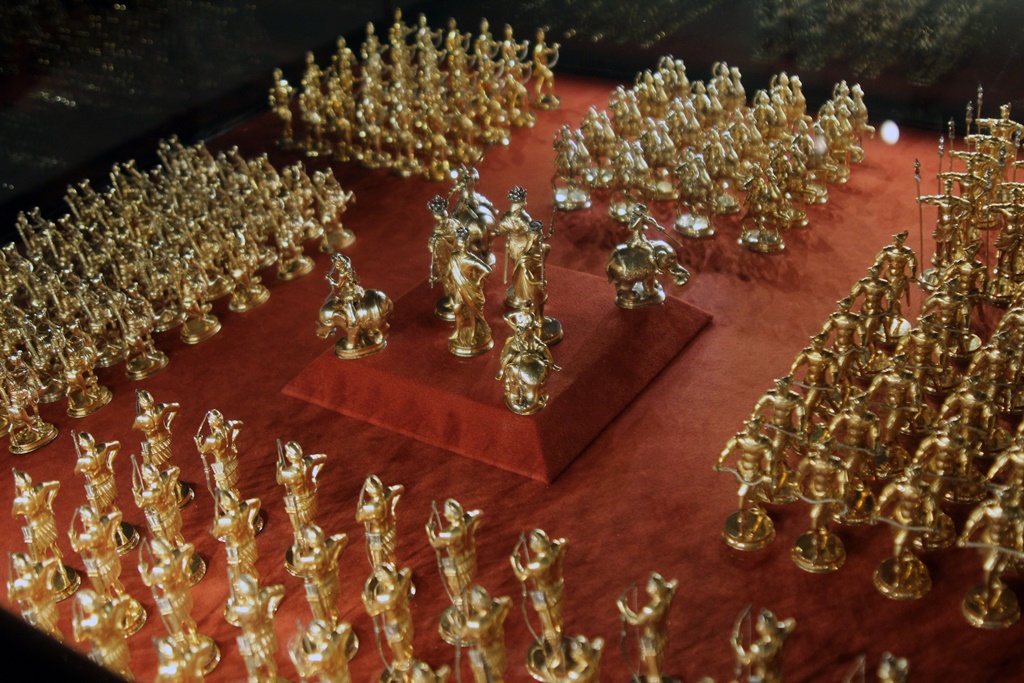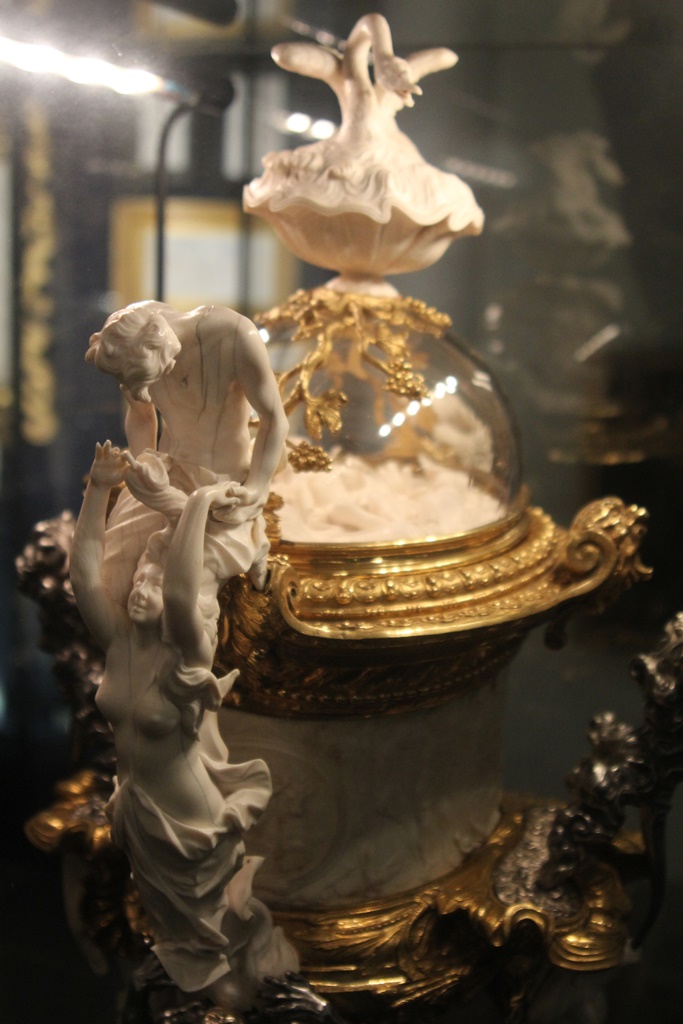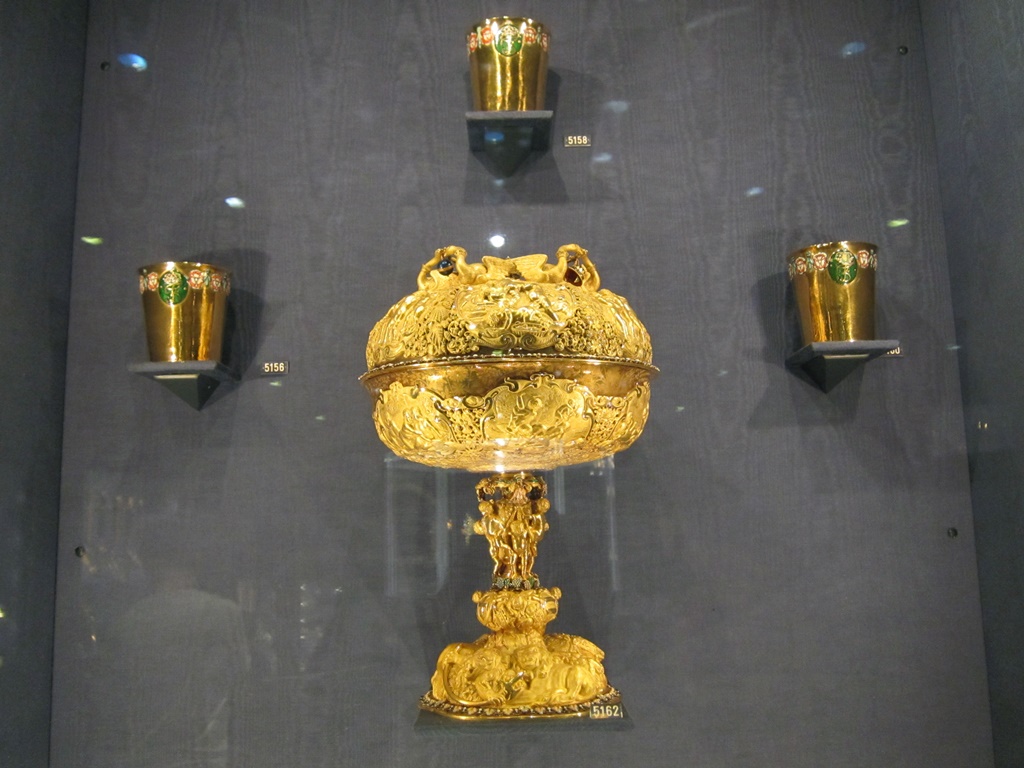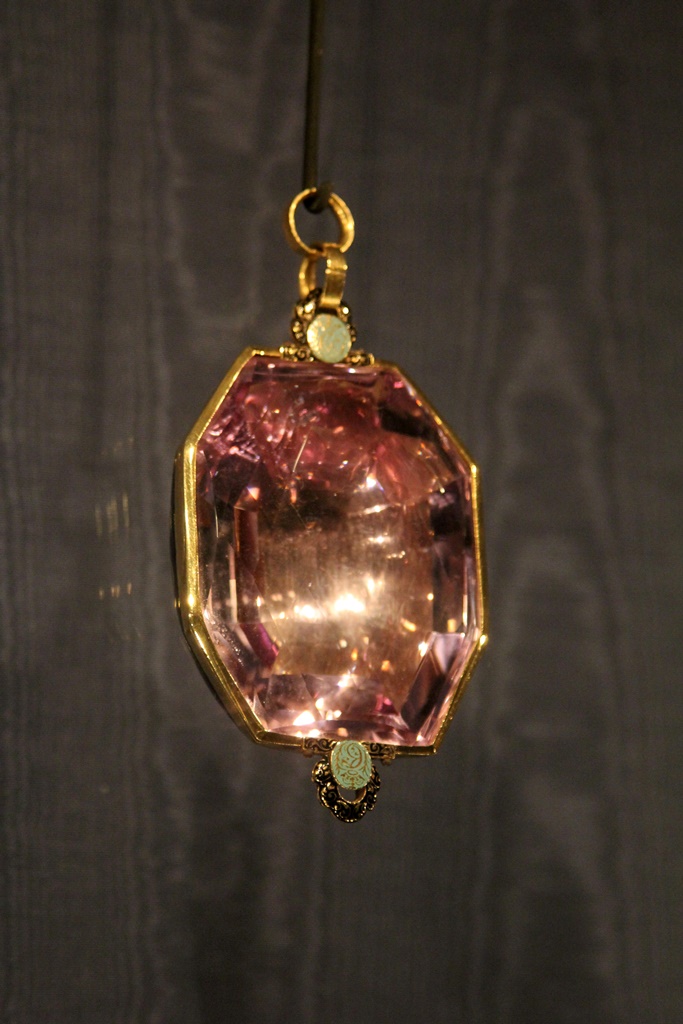I have to admit that the title for this section is not quite accurate, or at least not complete. A
better title might be "The Crown Jewels, and a Lot of Things that Aren’t Crown Jewels". Or more
succinctly, "Rosenborg’s Basement". But a basement invokes images of a dark, dingy place filled with
forgotten stuff, mostly of negligible value, plus maybe a furnace or a water heater. Rosenborg’s
basement isn’t really like this – there might be some appliances of this sort hidden somewhere, but
we didn’t notice, as we were busy looking at the fabulously valuable stuff the basement is filled
with.
I also have to admit that I’m not that clear on what separates the Crown Jewels from the Things that
Aren’t, so I won’t attempt to point out Crown Jewels when they appear, as I stand a pretty good
chance of being wrong. But I can promise this: Some of the following things are for-real Crown
Jewels. First, we’ll start with some things that definitely aren’t Crown Jewels – some of the royal
firearms:
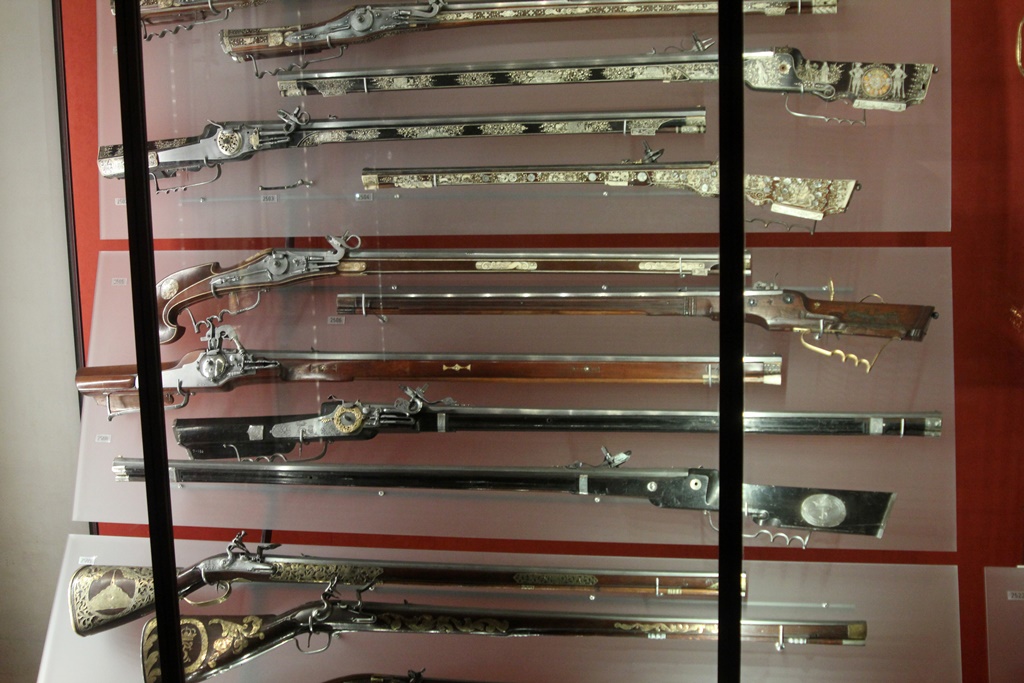
Ceremonial Muskets
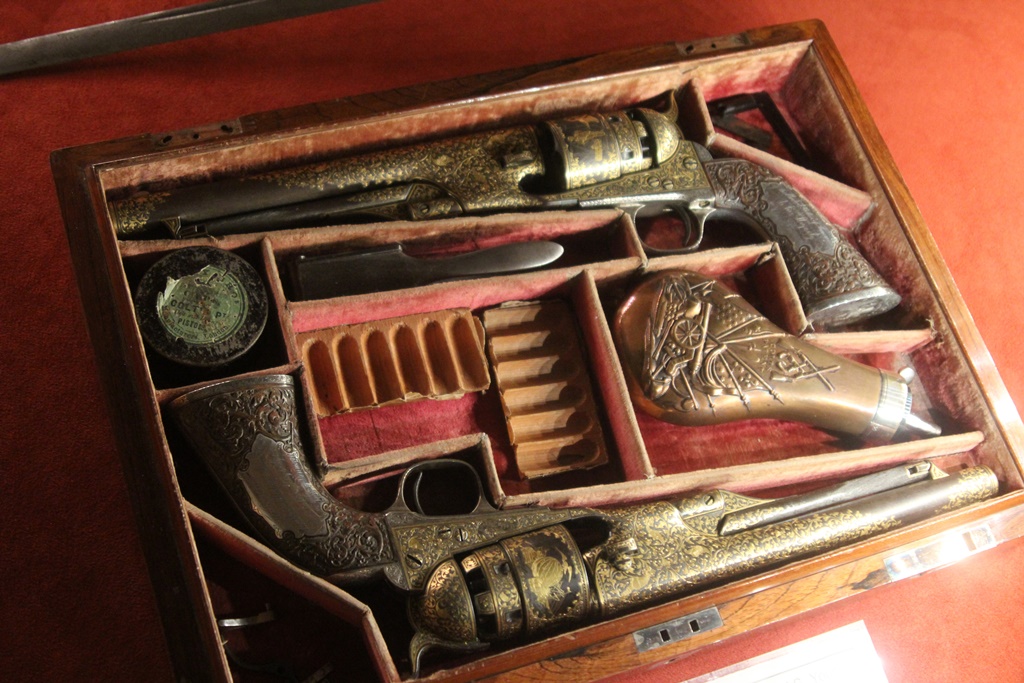
Set of Colt Revolvers
"Romans and Africans" Game (1748-56)
As seen in the upper floors of the castle, the royal family had an affinity for elaborate decorative objects. A
preferred material from which to make such objects (and popular throughout Europe, though undoubtedly less so
with elephants) was ivory.
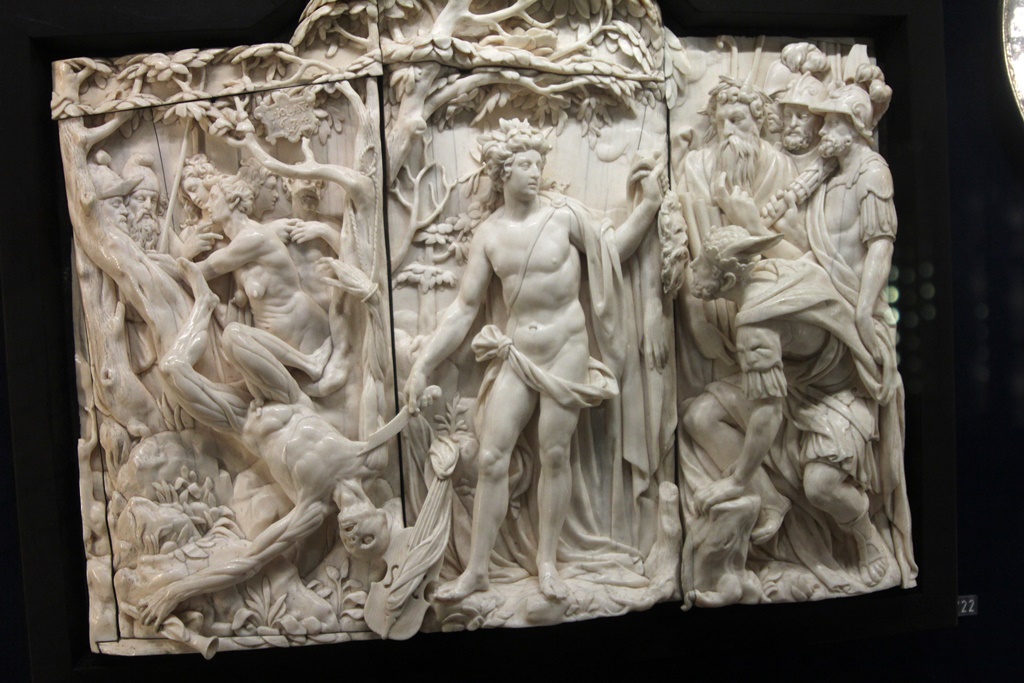
Marsyas, Pan and Apollo, Hans Ochs (1624)
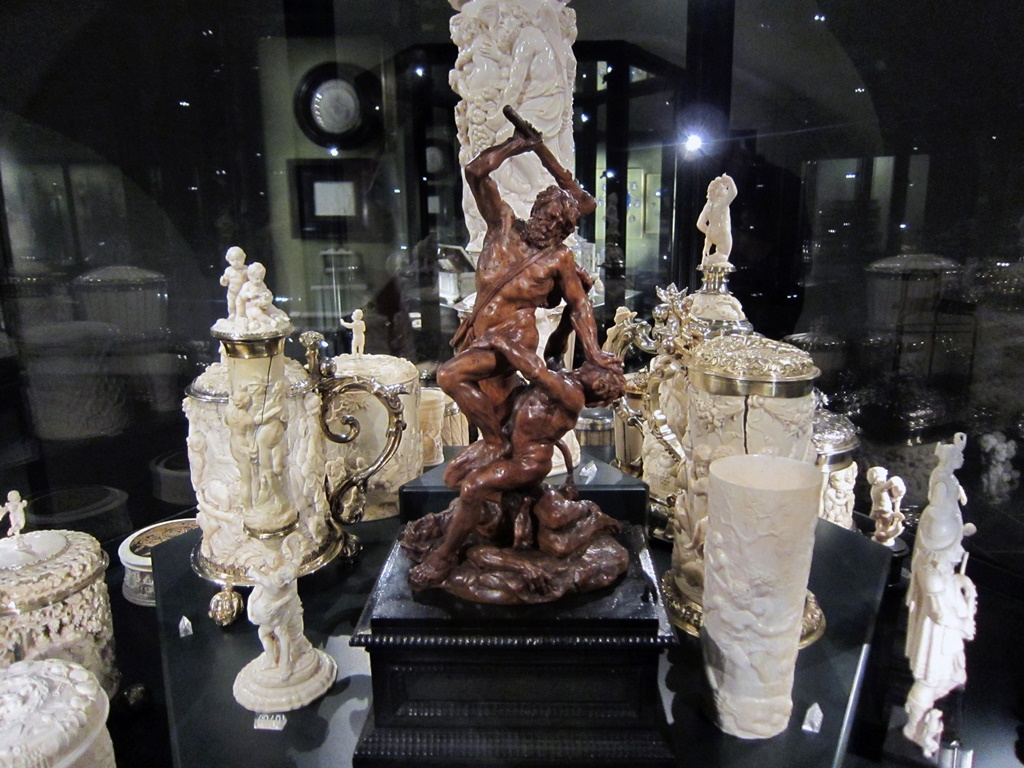
Ivory Objects and Fighting Figures
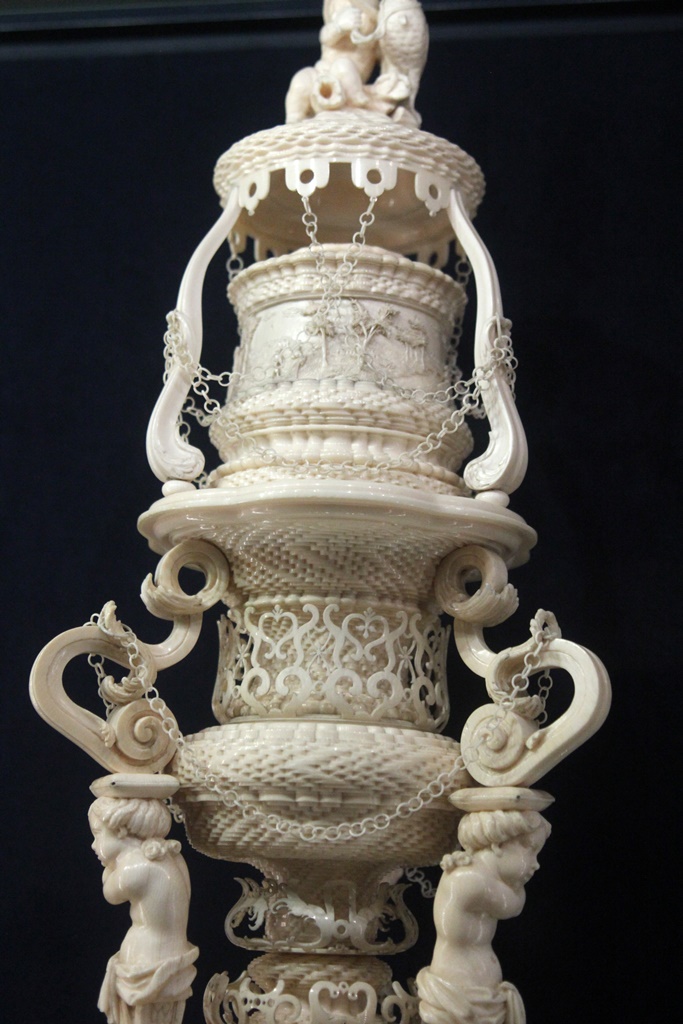
Ivory Creation
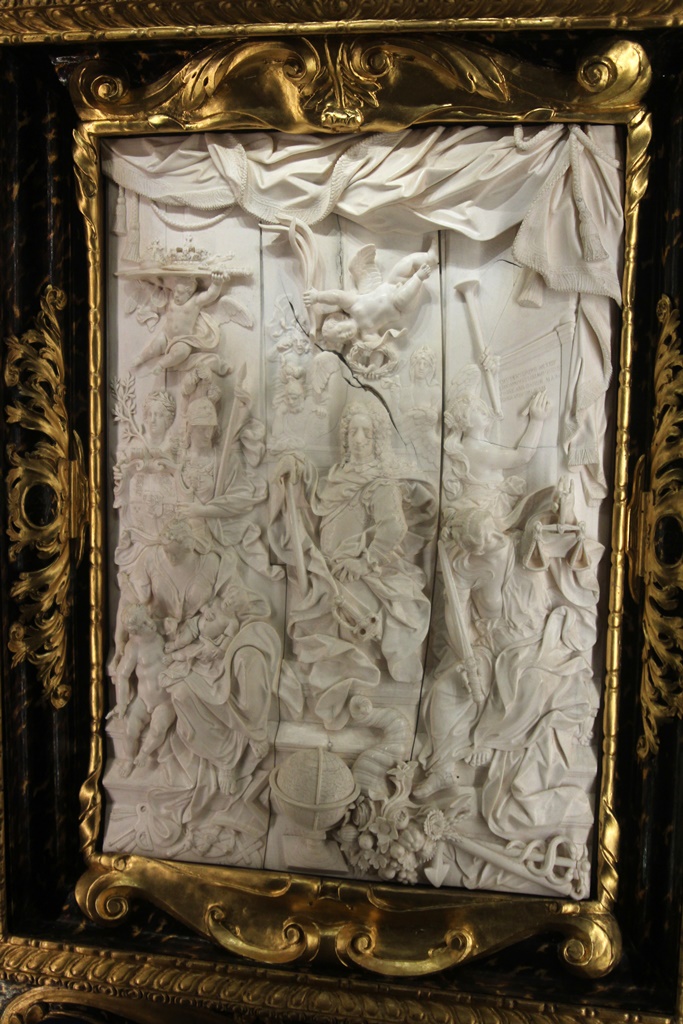
The Apotheosis of Frederik IV, Magnus Berg
Water, Magnus Berg (1708-23)
Another frequently-used material from which to make valuable decorative objects was fossilized tree resin,
otherwise known as amber.
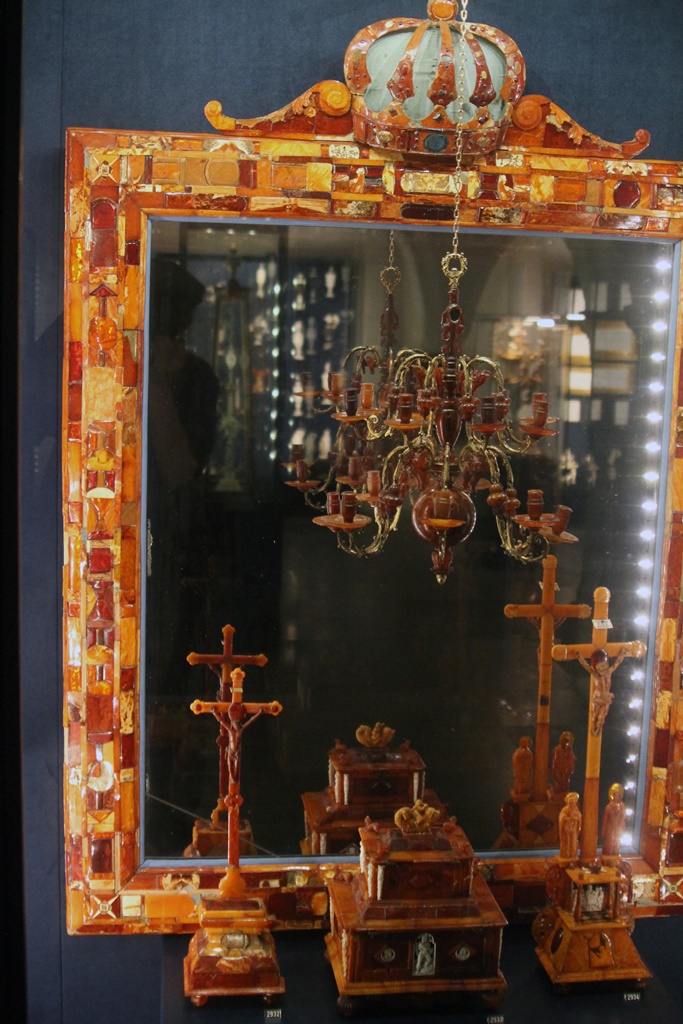
Amber Mirror Frame Etc.
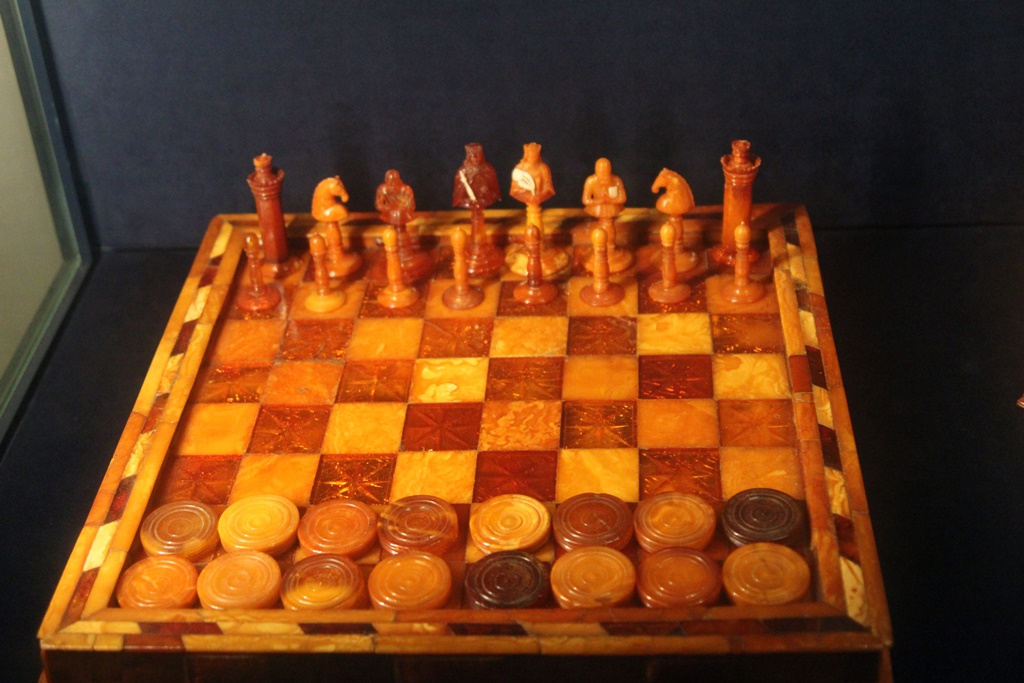
Amber Chess/Checkers Set
And a king couldn’t drink wine from a jelly glass or Dixie Cup – a kingly vessel such as one of the following
was required:
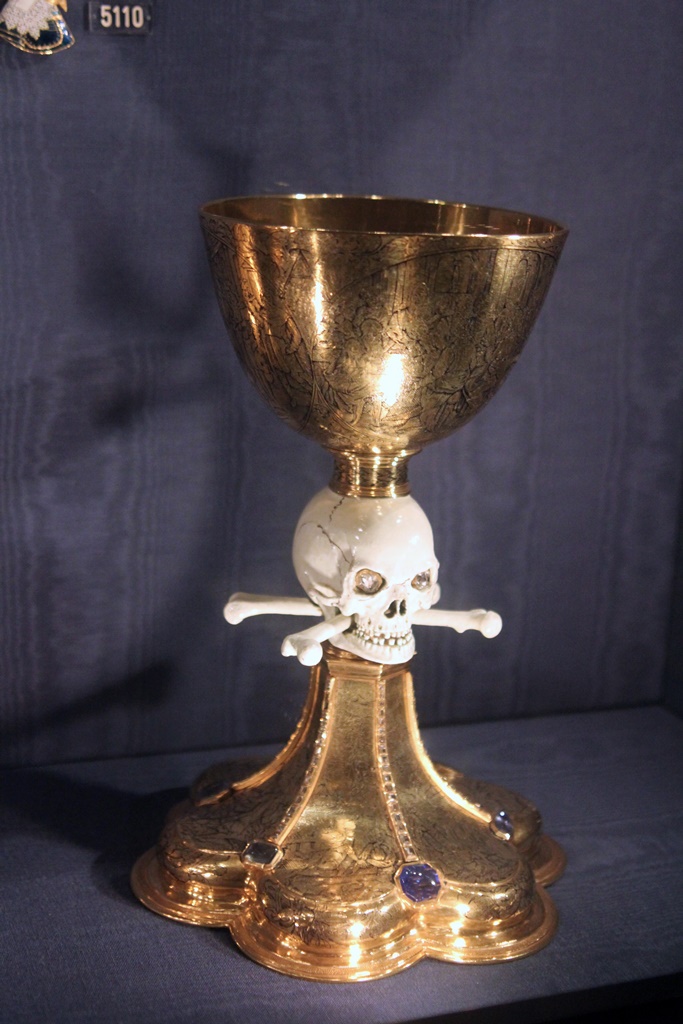
Chalice from Altar Set (1632)
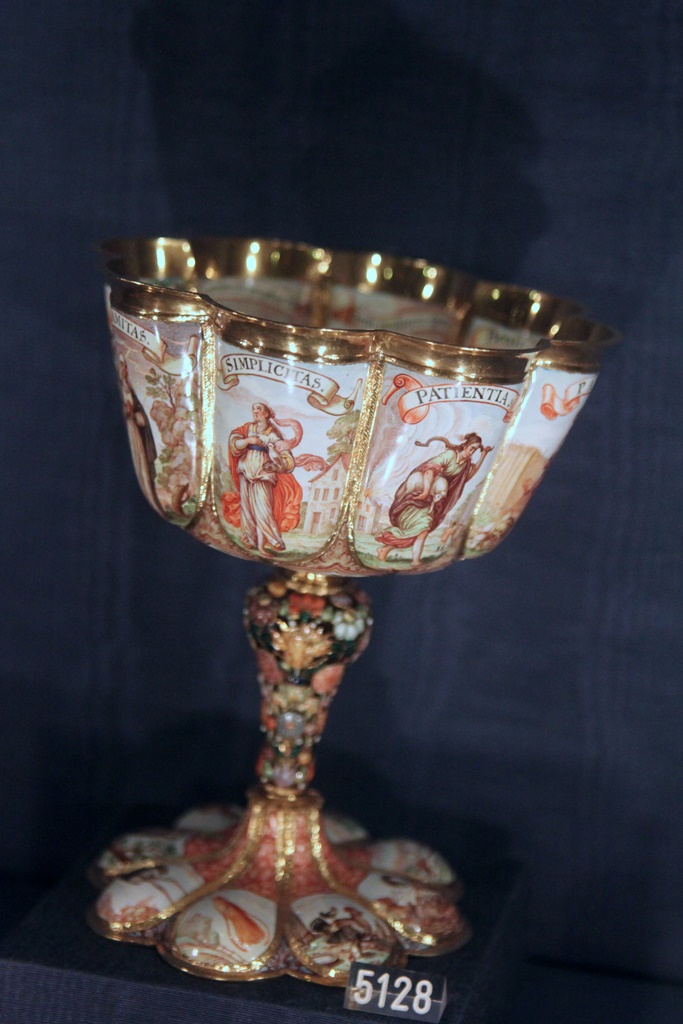
Enameled Chalice (1648)
Frederik III's Coronation Set (1653)
Another type of object of which the royals were fond was an object in which one could store
other objects. Here are some of their favorite containers:
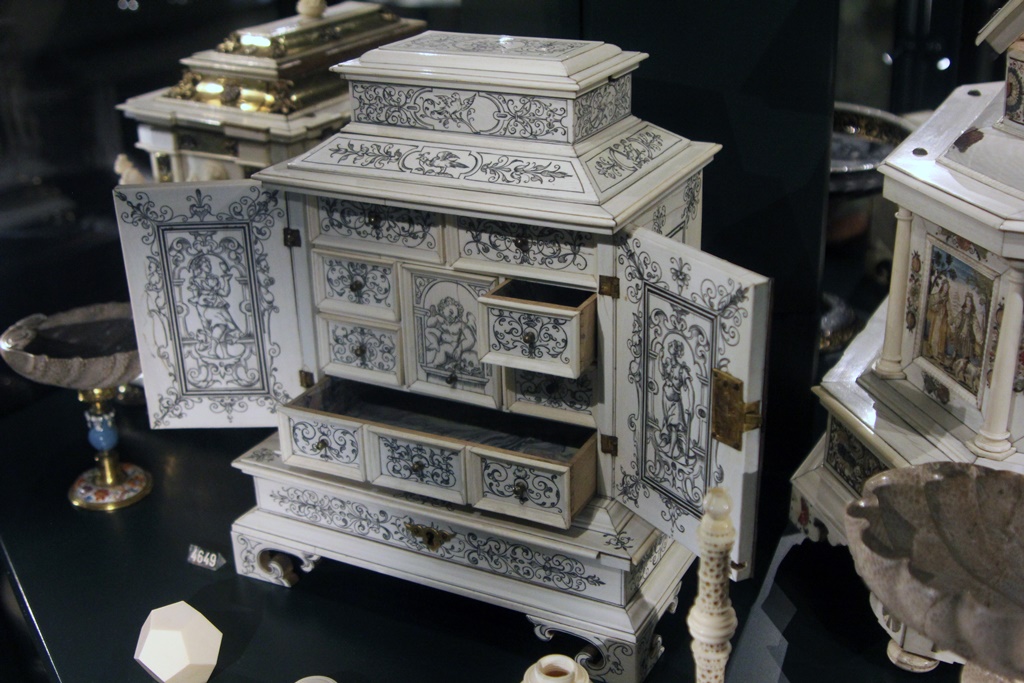
Jewelry Box
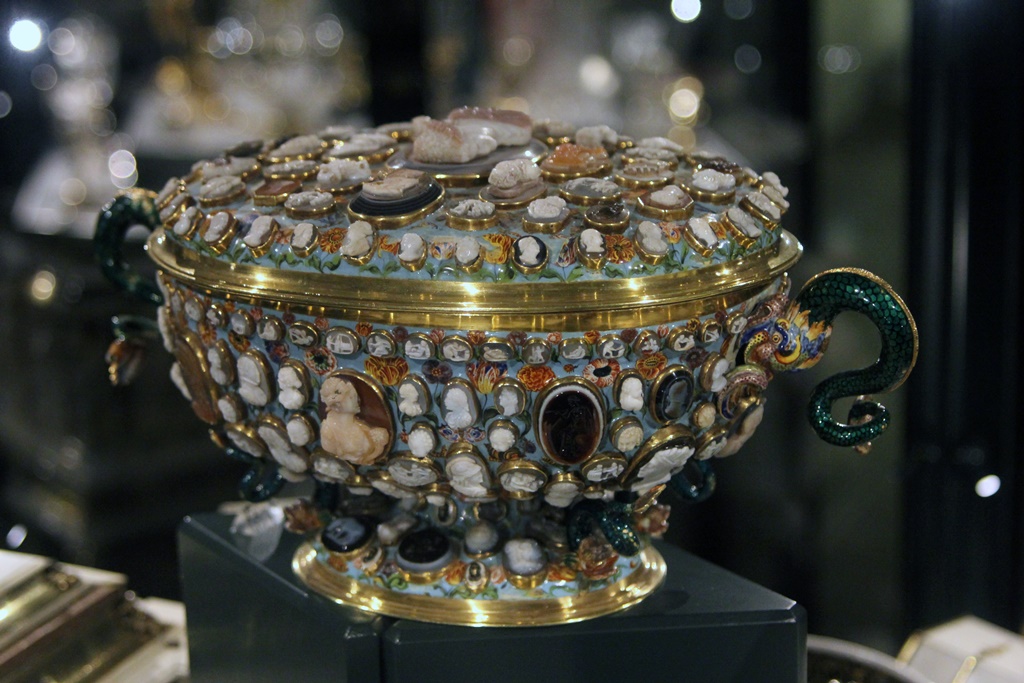
Covered Bowl with Cameos and Intaglios
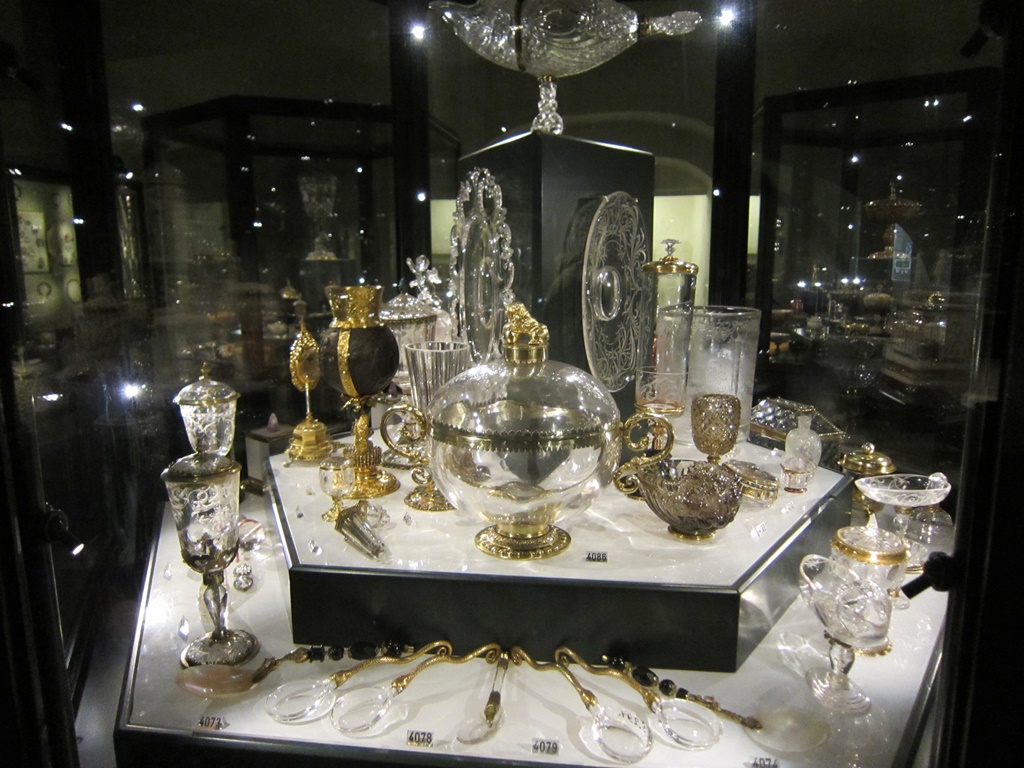
Crystal Vessels
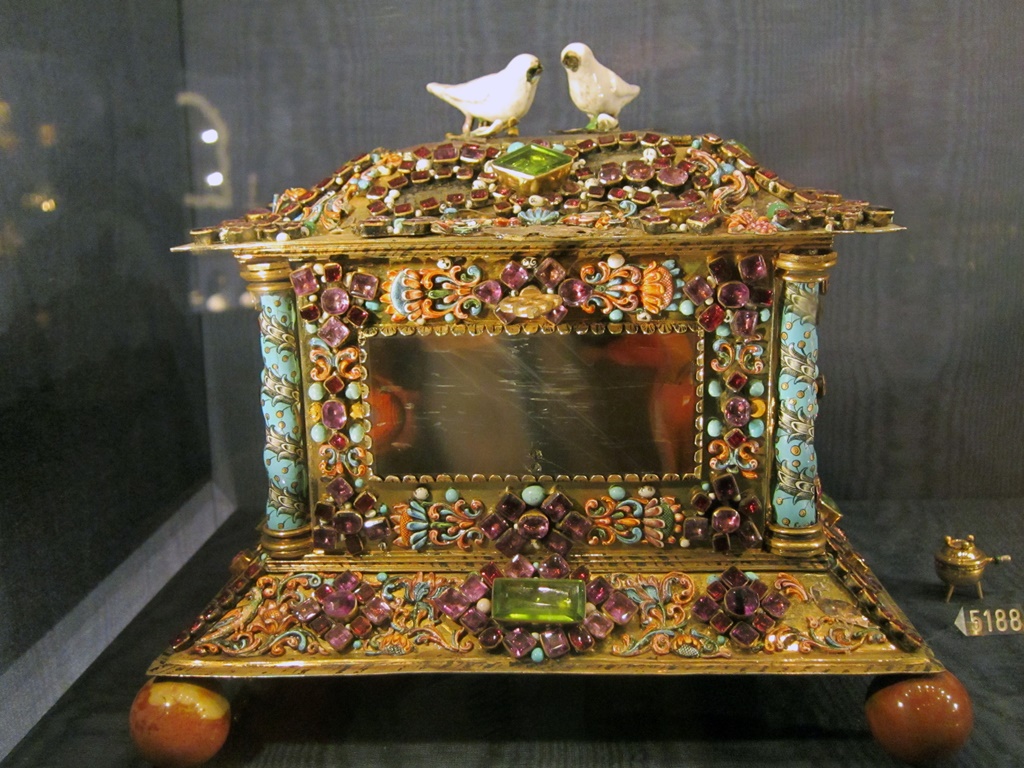
Jewelled Box with Birds
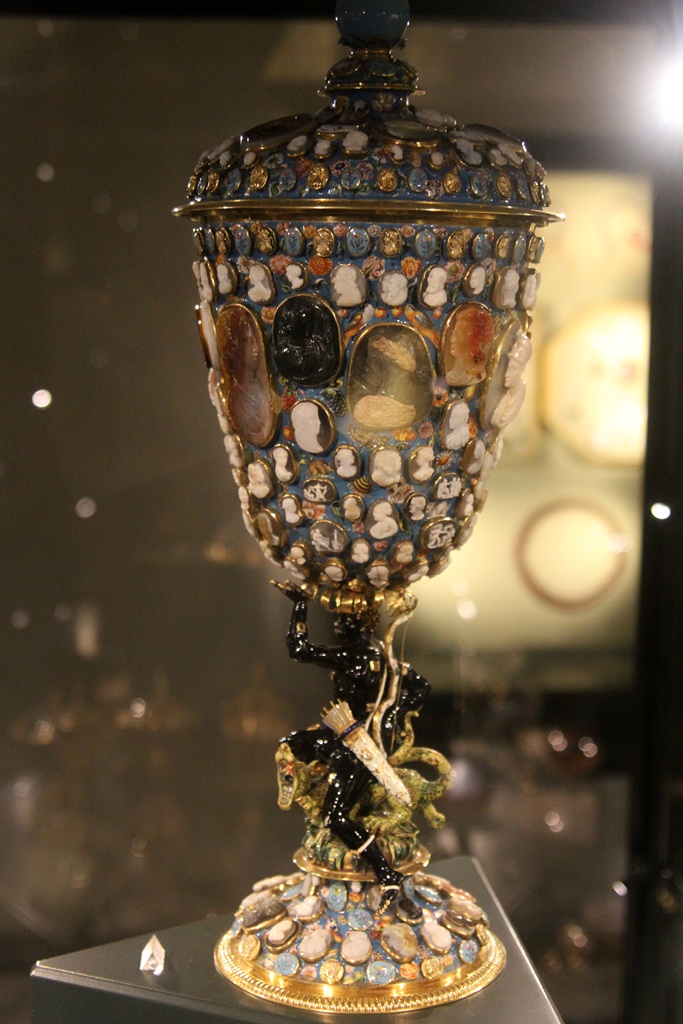
Cup with Cameos and Intaglios (ca. 1635-50)
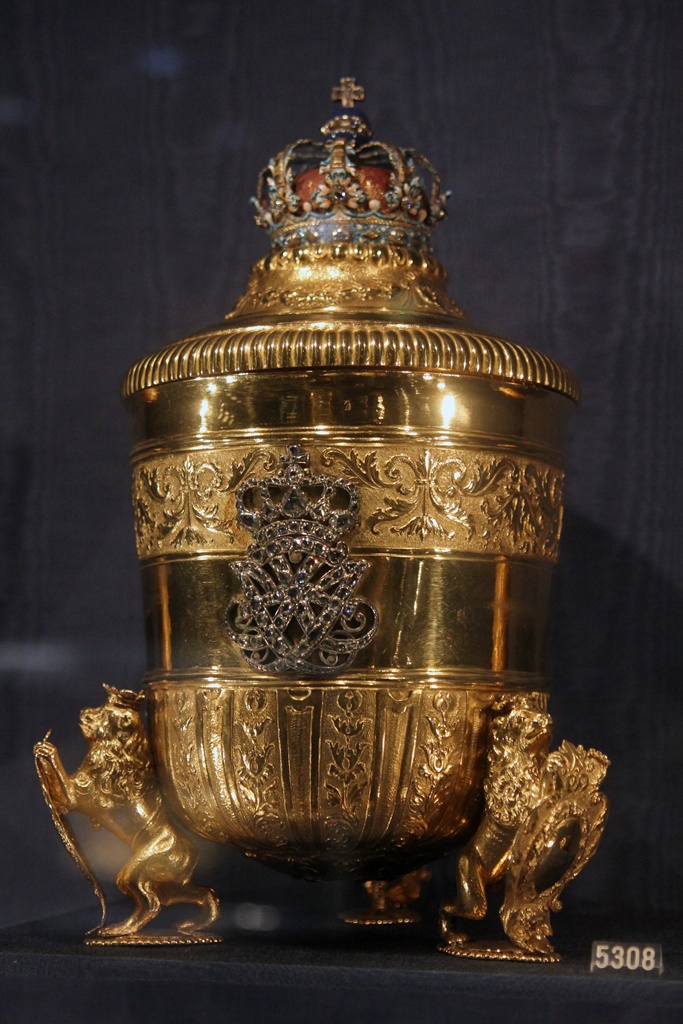
Gold Pot with Crown
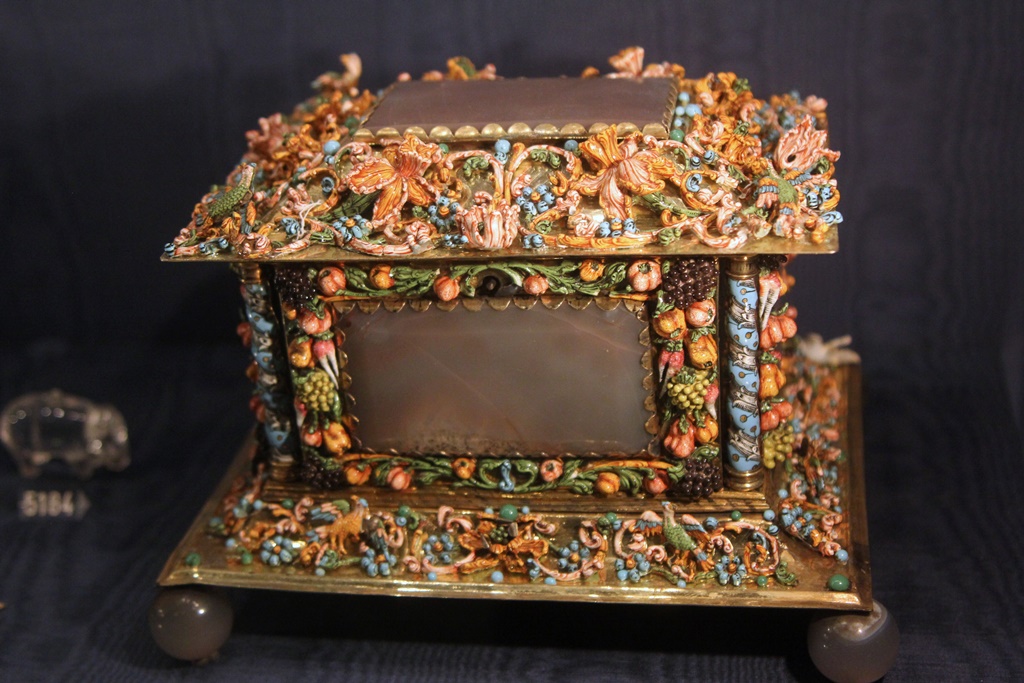
Box with Enameled Fruit and Flowers
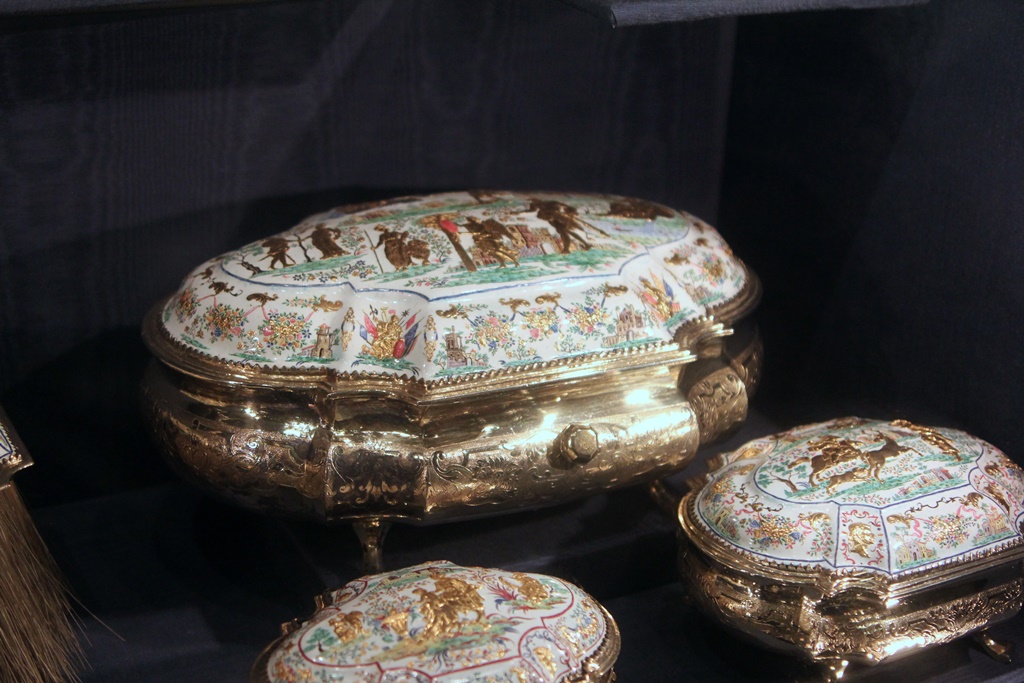
Enameled Boxes
And of course there was always room in the castle for random stuff.
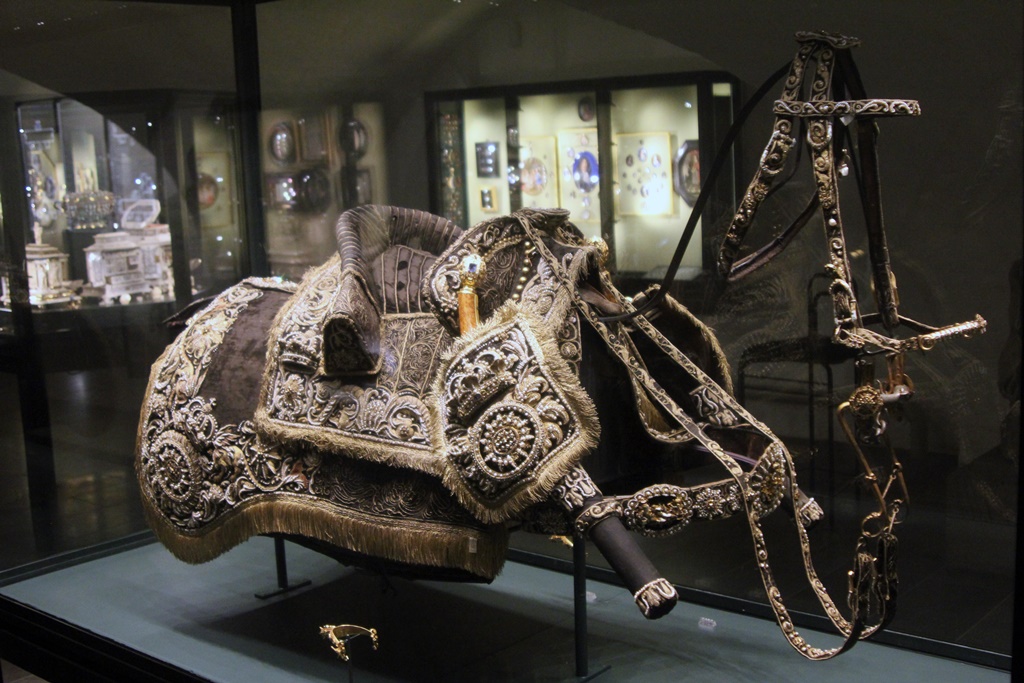
Jewelry for Horses (1634)
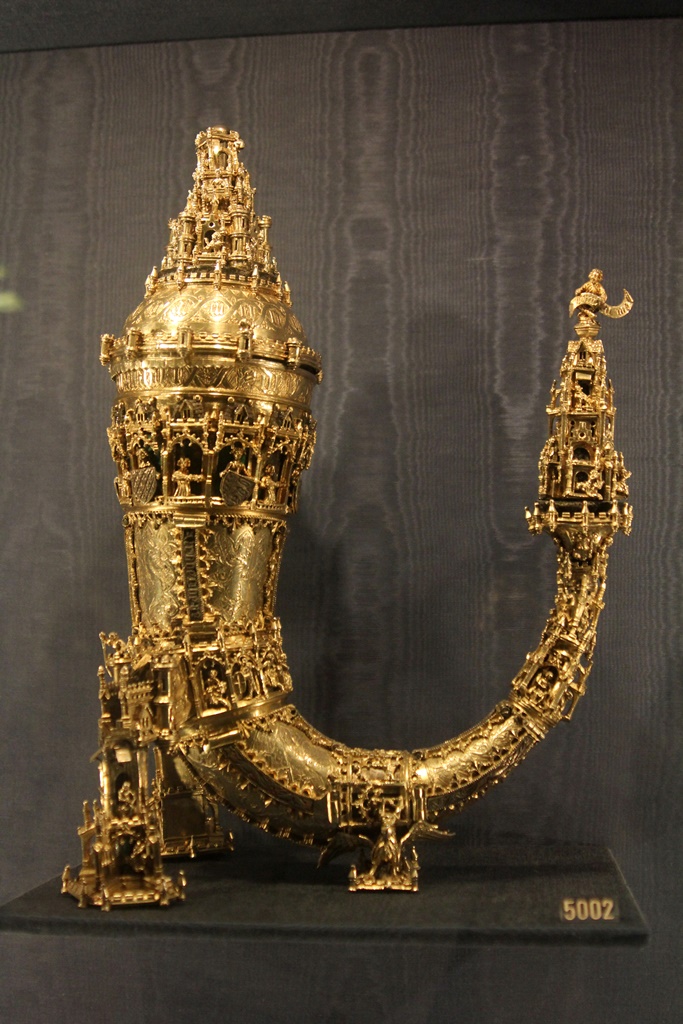
The Oldenburg Horn (ca. 1465)
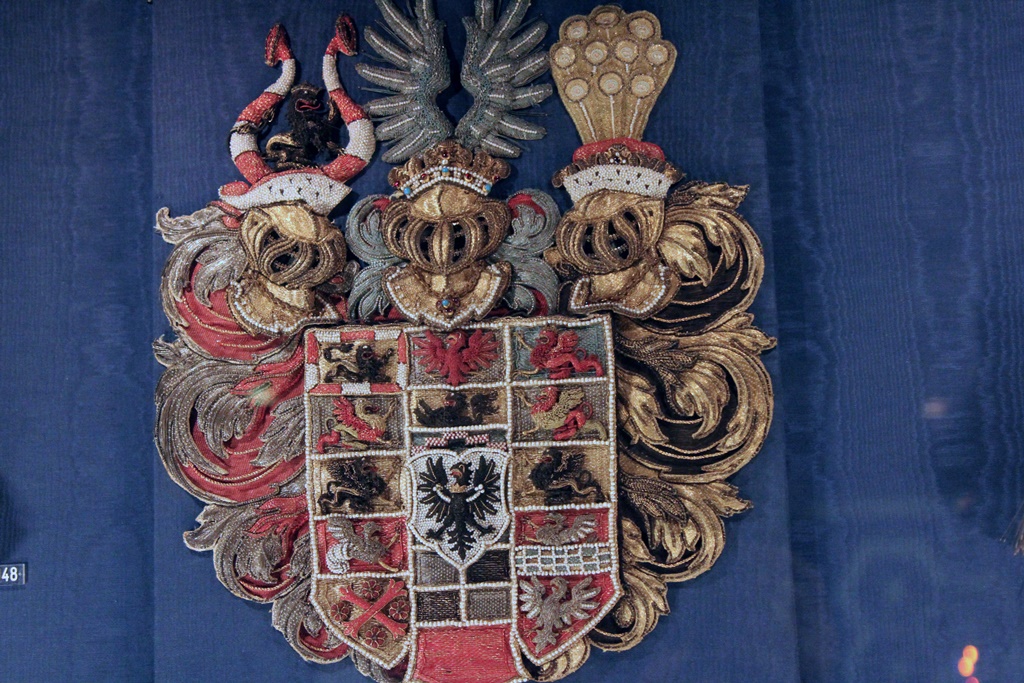
Beaded Coat of Arms
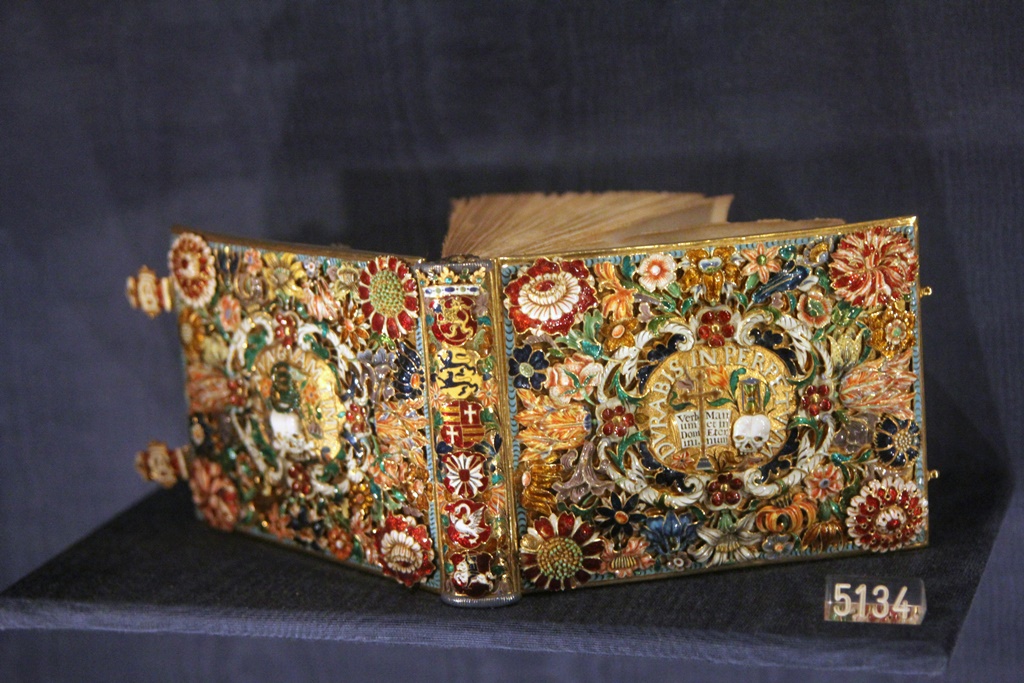
Prayer Book of Anne Cathrine
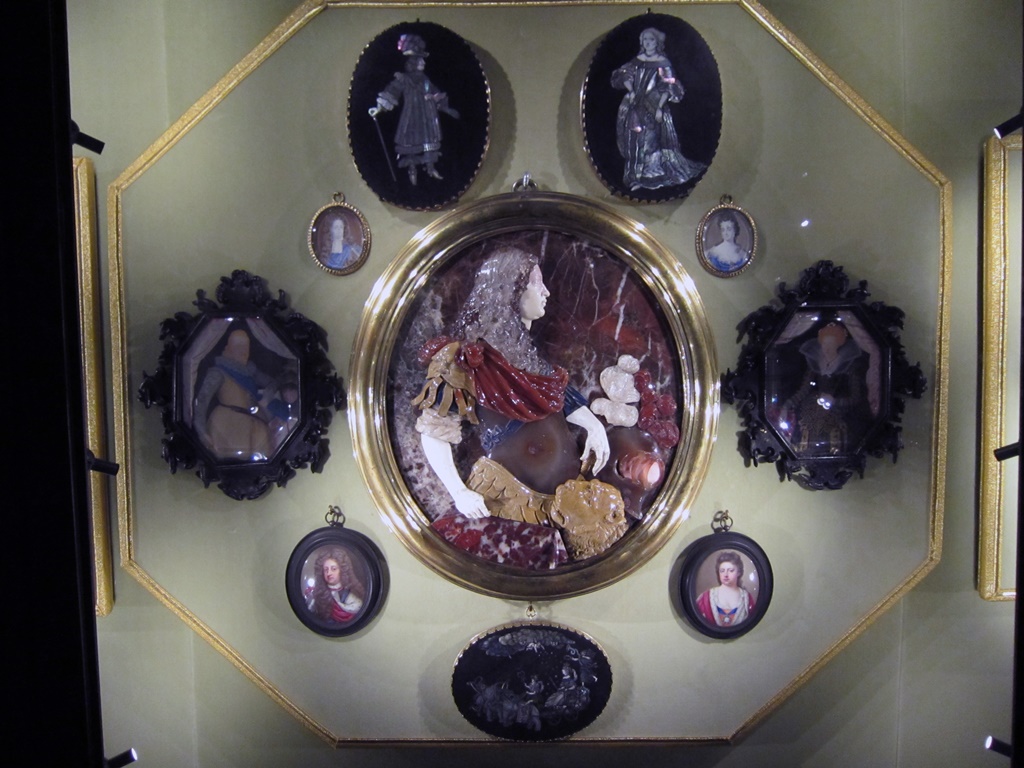
Relief Medallion of Carl of Hesse (1692)
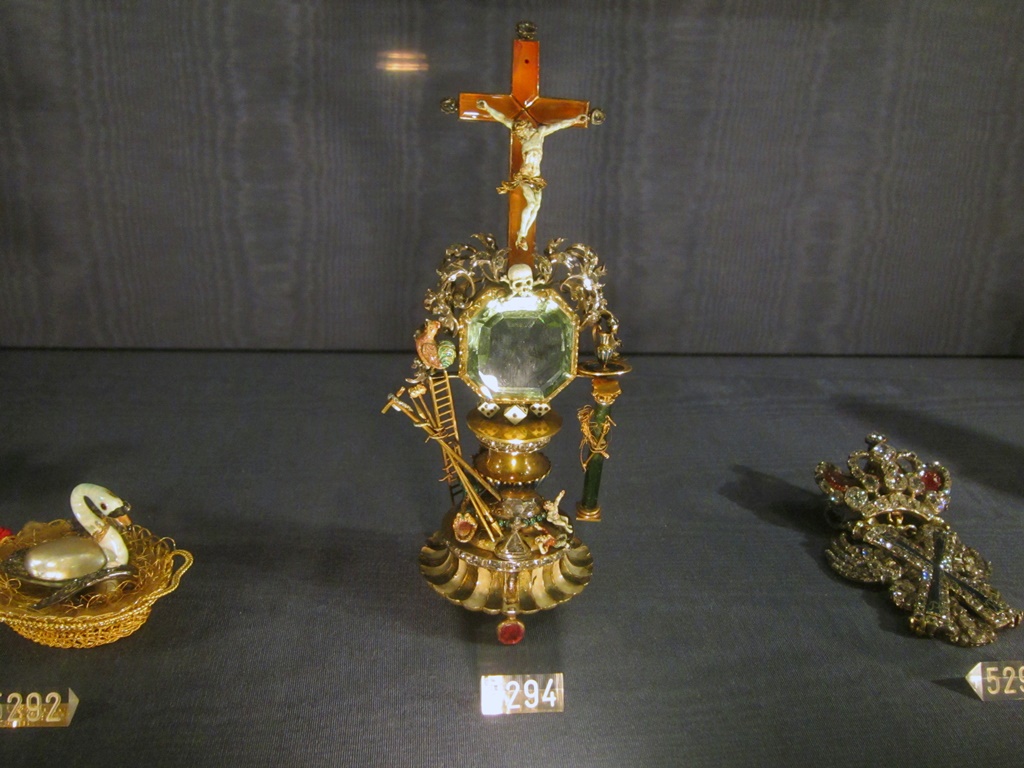
Large Jewel with Skull, Dice and Cross
Some objects display a Danish Coat of Arms. Different members of the royal family have different
coats of arms, but there is generally an elephant to be found somewhere in the display. This
symbolizes membership in the Order of the Elephant, Denmark’s highest honorary order, reserved for
members of the royal family, selected heads of state, or (rarely) commoners of high
accomplishment. Sometimes the Coat of Arms is accompanied by woodwoses, mythical "wild men"
who are said to live in forests throughout Europe.
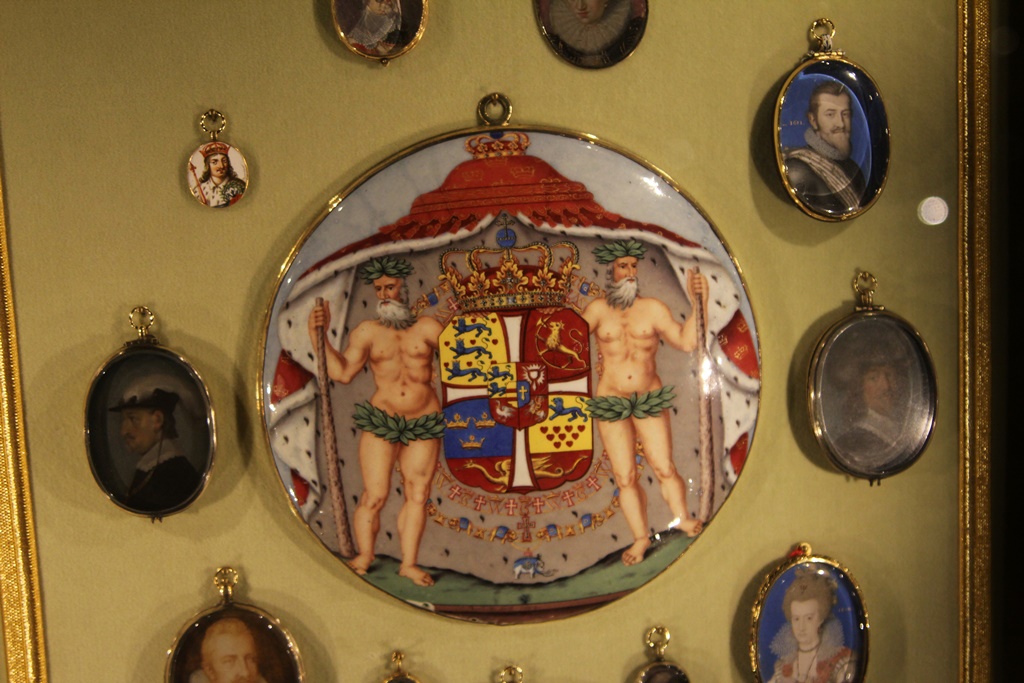
Coat of Arms with Woodwoses
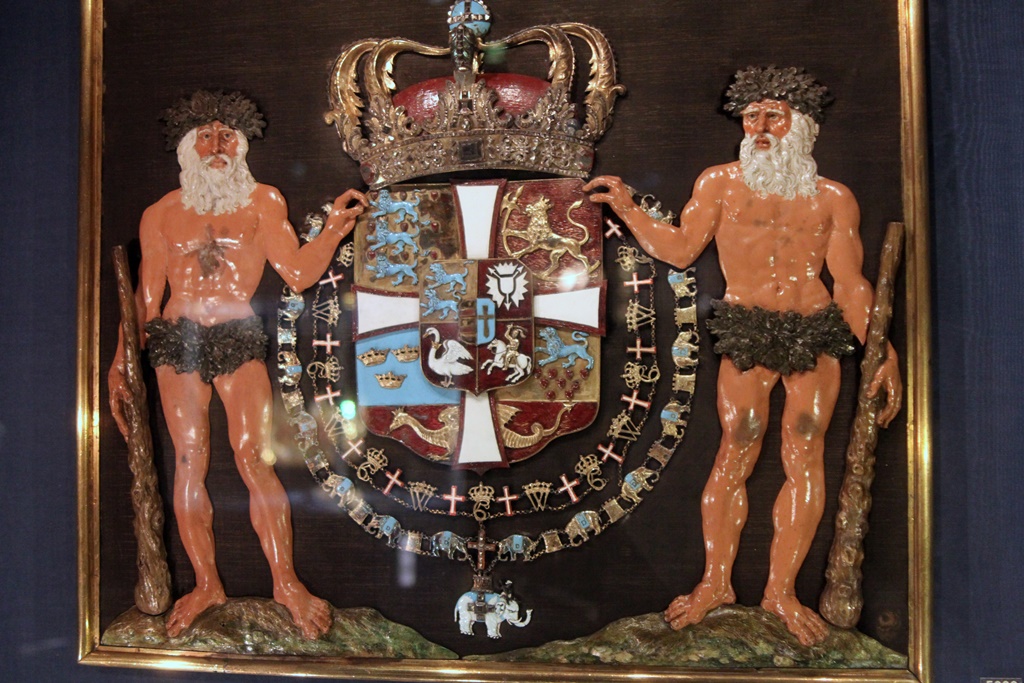
Another Coat of Arms with Woodwoses
And of course there was quite a bit of jewelry on display. Maybe some of the following are
considered Crown Jewels:
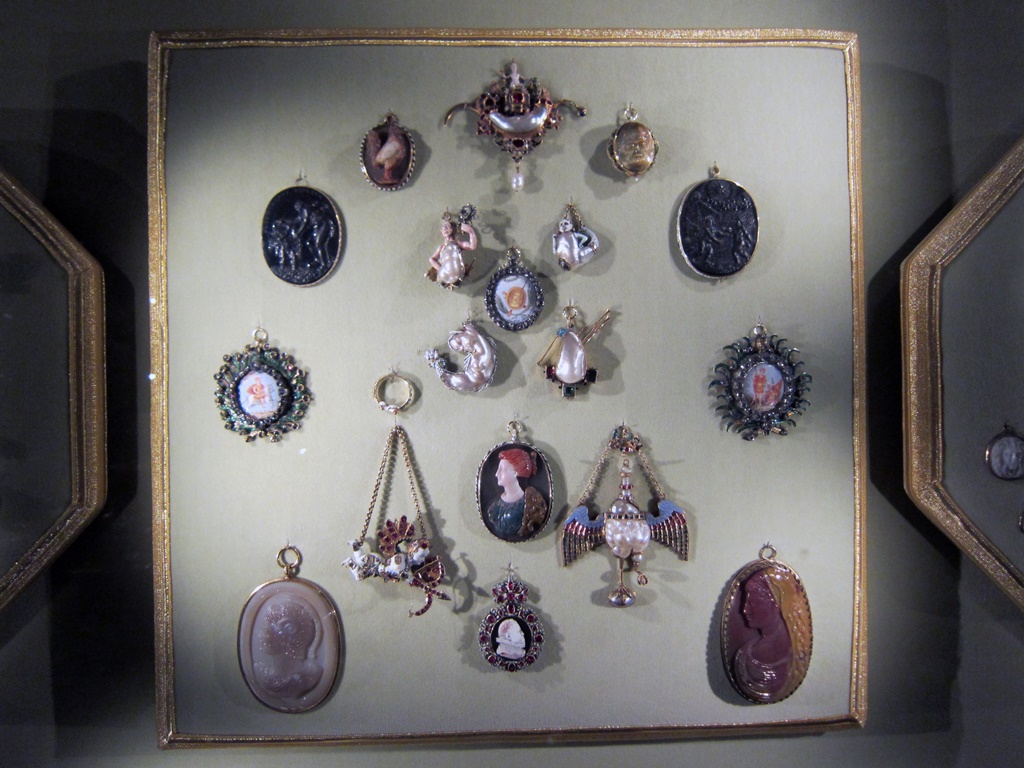
Jewelry (16th-17th C.)
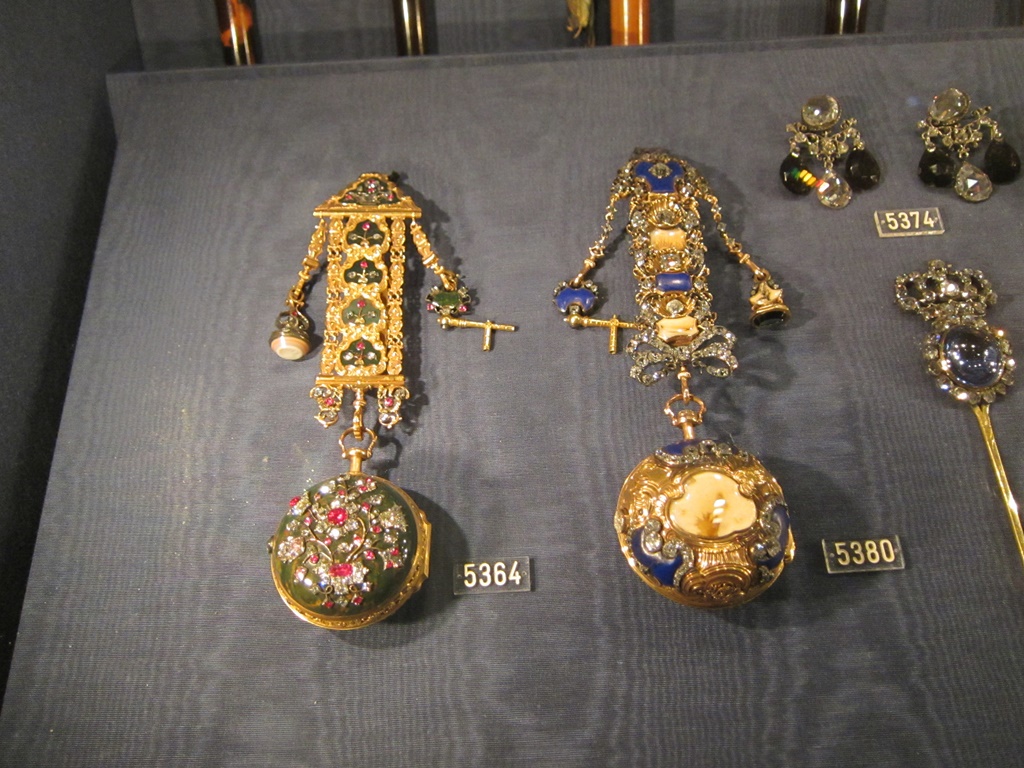
Jewelled Pendants
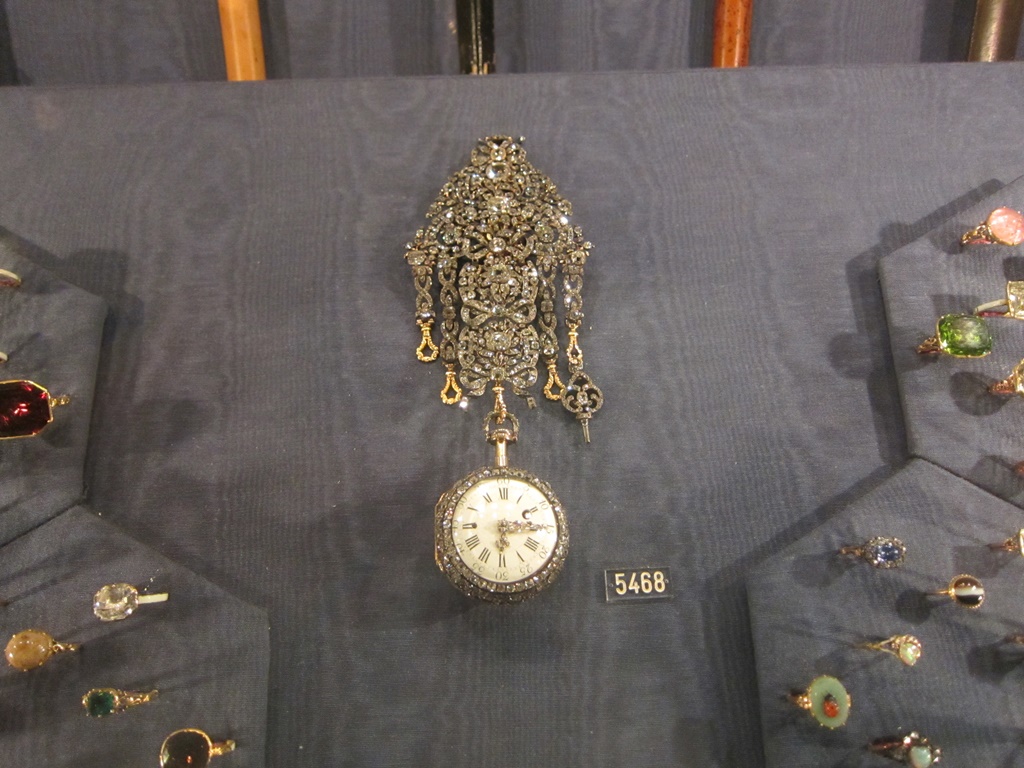
Caroline Mathilde's Watch (1767)
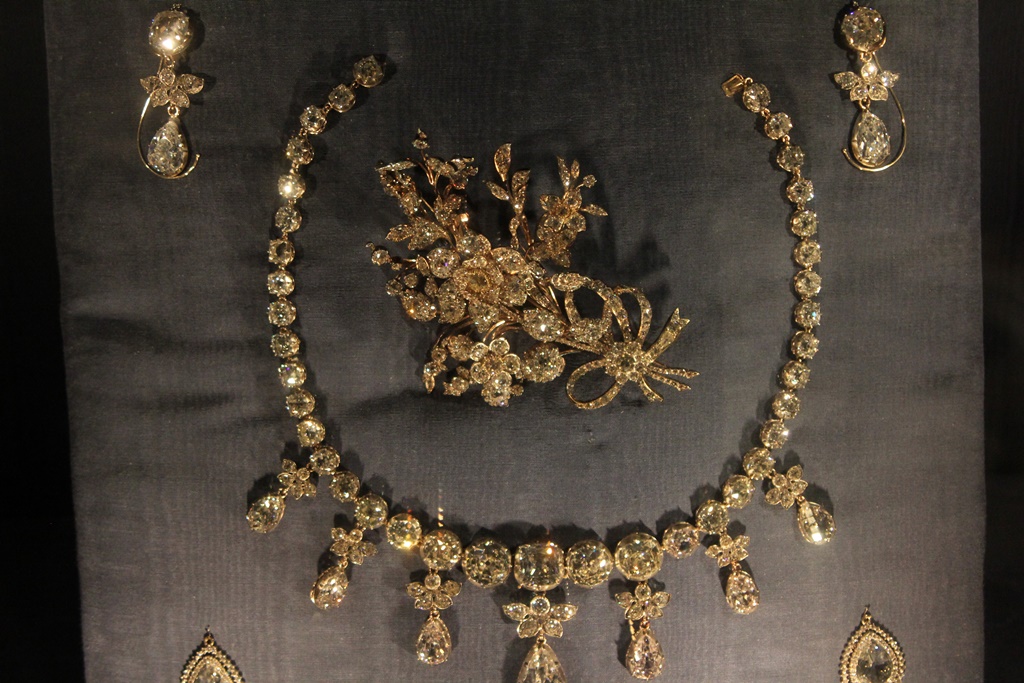
Jewelry of Wives of Christian VI and Christian VII
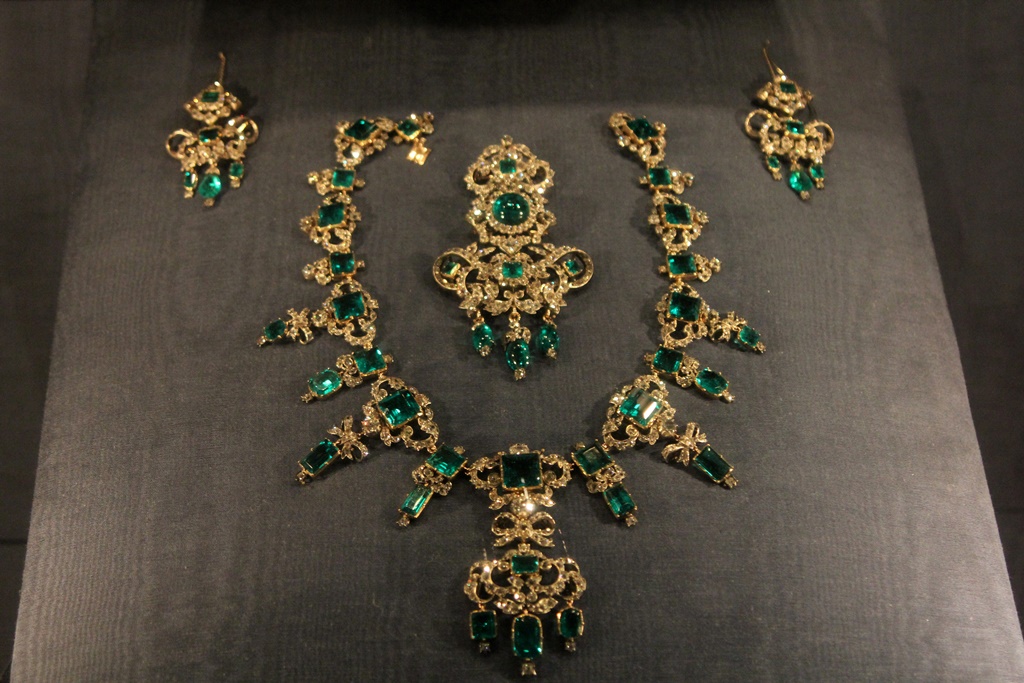
Emerald Set of Sophie Magdalene (1723)
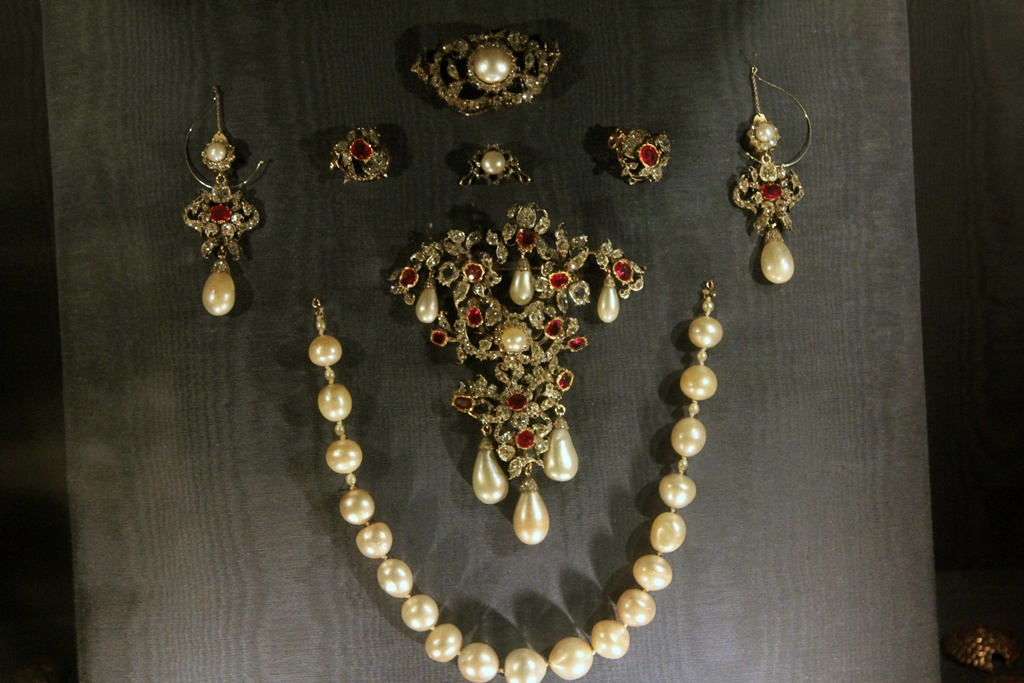
Jewels of Caroline Amalie (1840)
The Royal Amethyst (1671)
At one time Danish monarchs wore or held special royal objects at ceremonial occasions. These objects
are collectively known as the royal regalia, and they are not normally worn anymore. They are arranged
near or on the casket at a monarch’s funeral, however. The main pieces of the royal regalia are the
crown, the scepter, the royal orb and the sword of state. Additional ornamentation was also worn.
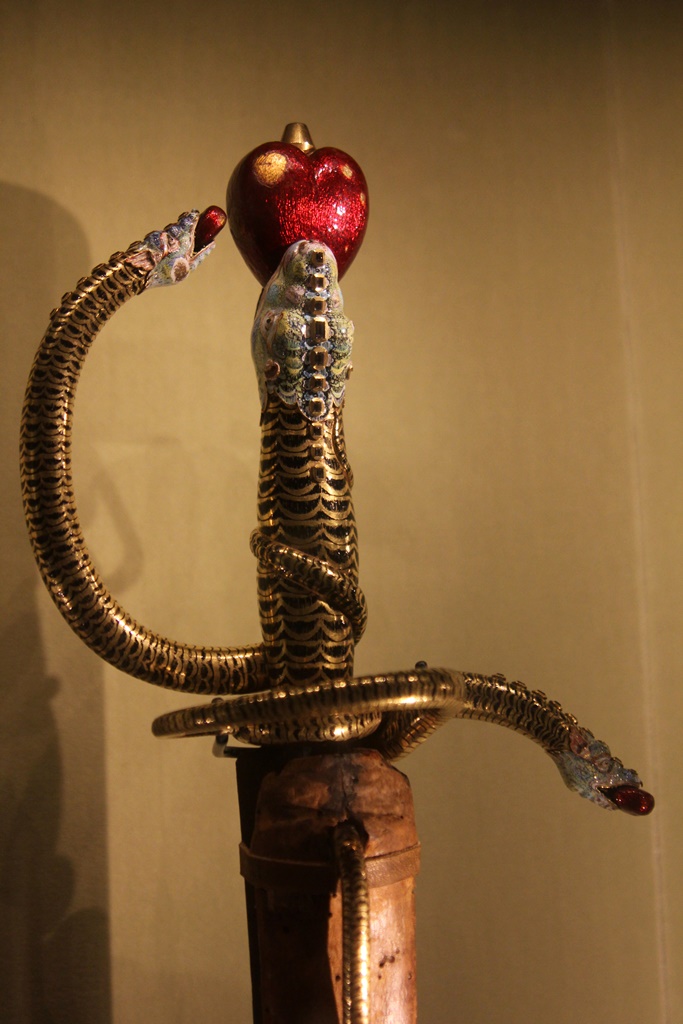
Rapier Hilt (Gold, Enamel, Diamonds, 1634)
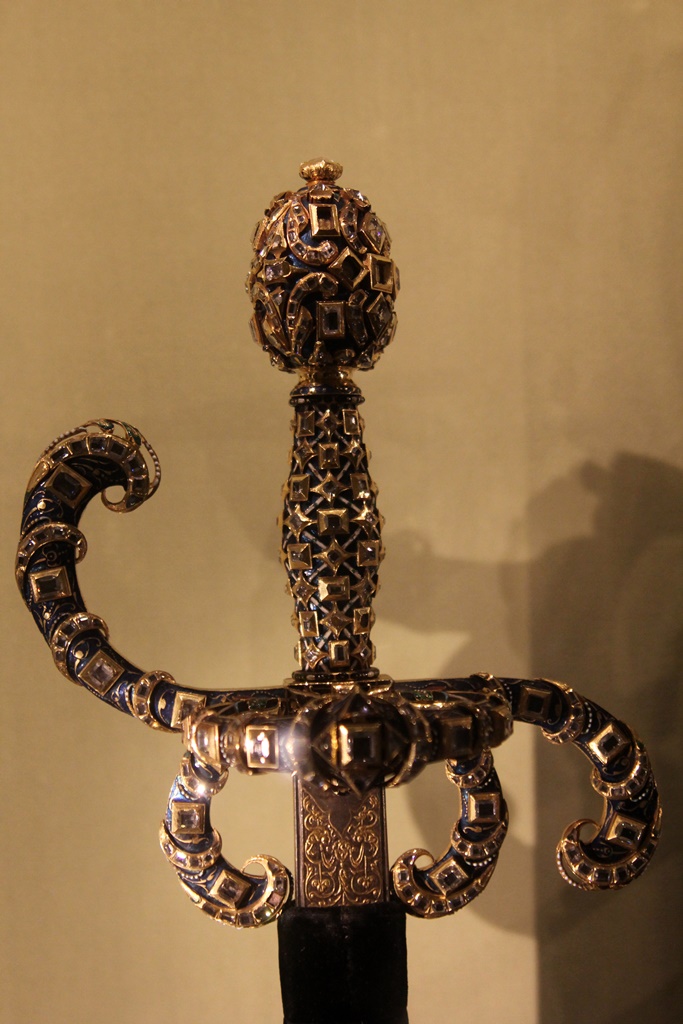
Sword Hilt
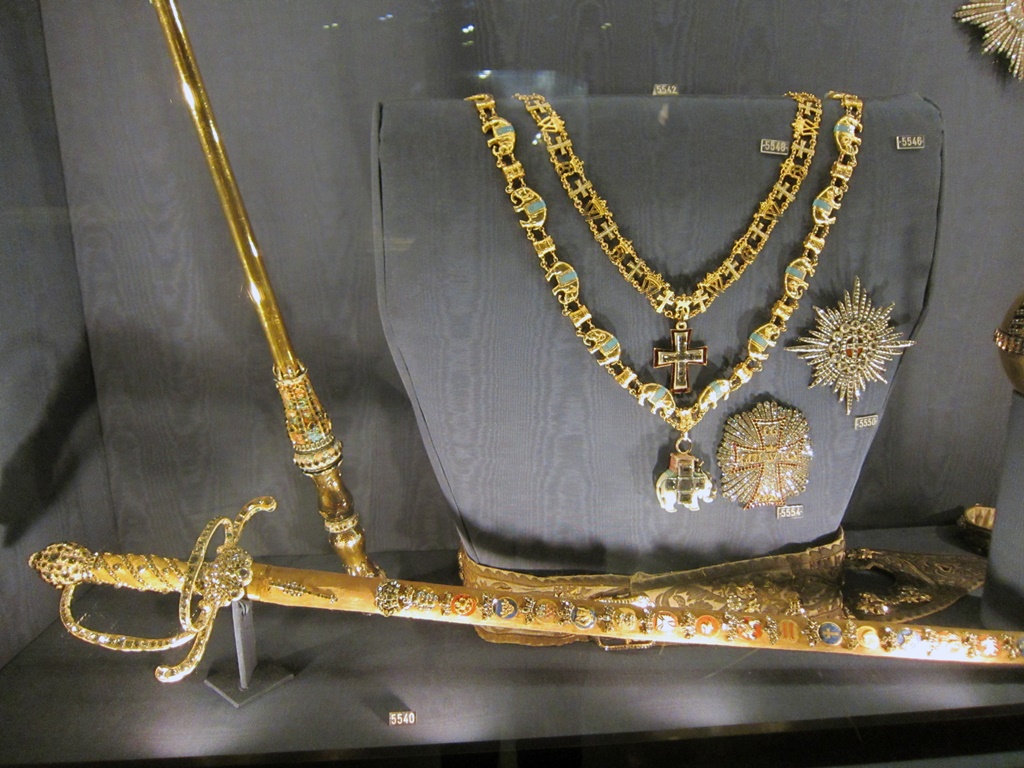
Regalia of Frederik III (1648)
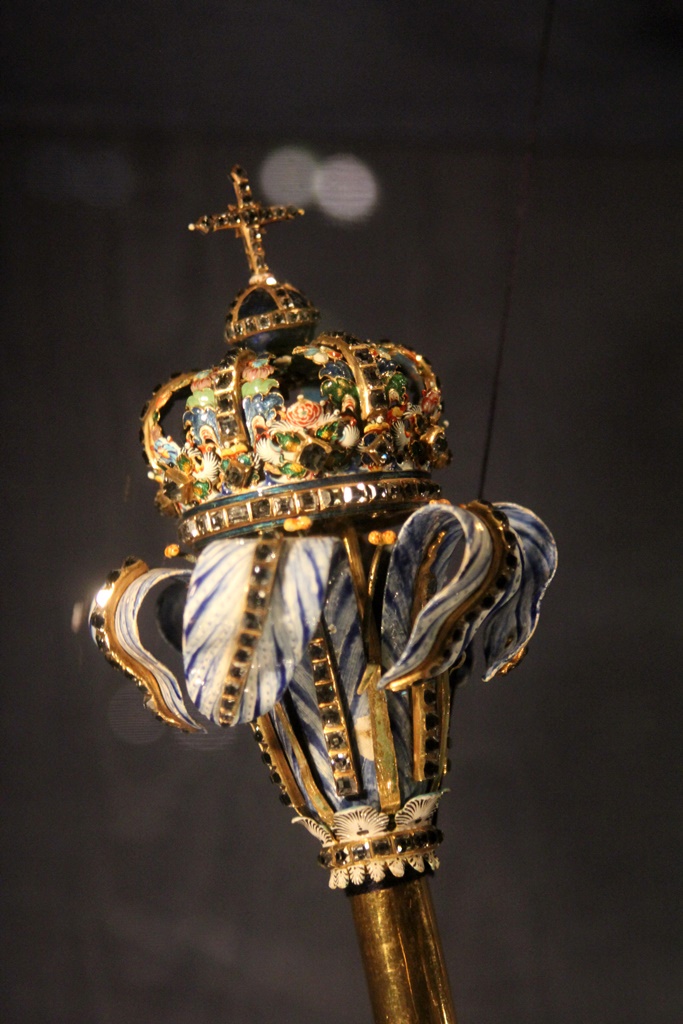
Scepter of Frederik III (1648)
There are three crowns on display. The oldest is the Crown of Christian IV, first used at Christian
IV’s coronation in 1596. It doesn’t look like it could have been very comfortable. It was last used
in 1648 at the coronation of Christian IV’s son, Frederik III. In 1671 Frederik had a new crown made
for his son, who was to become Christian V, and this crown is appropriately called the Crown of Christian
V. There is a similar crown that was used by queens. It was created in 1731 for use by Sophia Magdalen,
the queen of Christian VI.
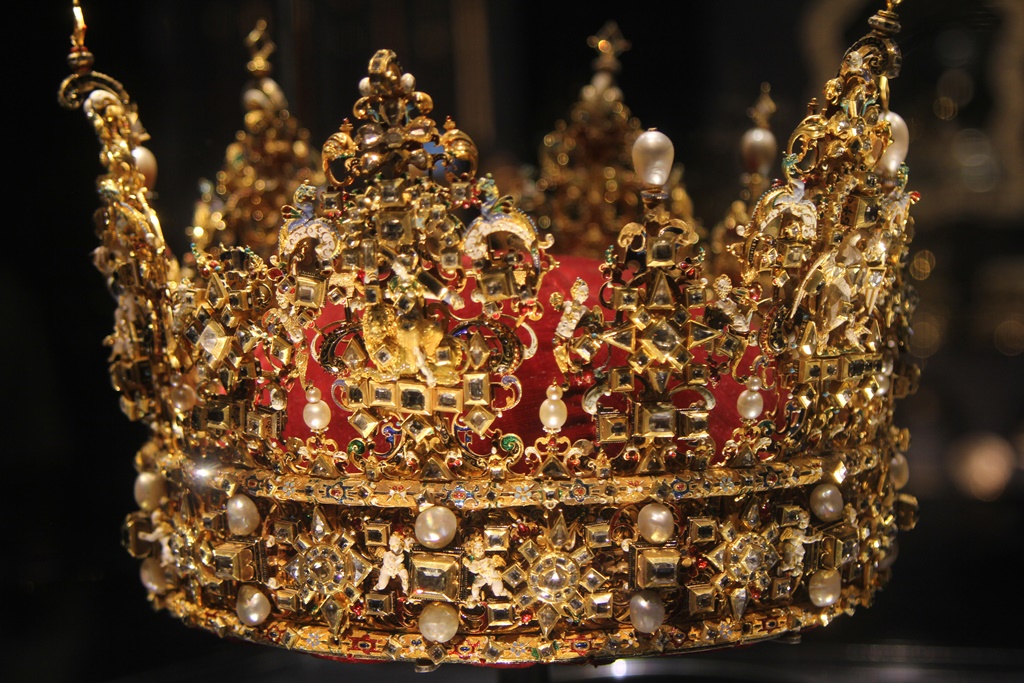
Christian IV's Crown (1595-96)
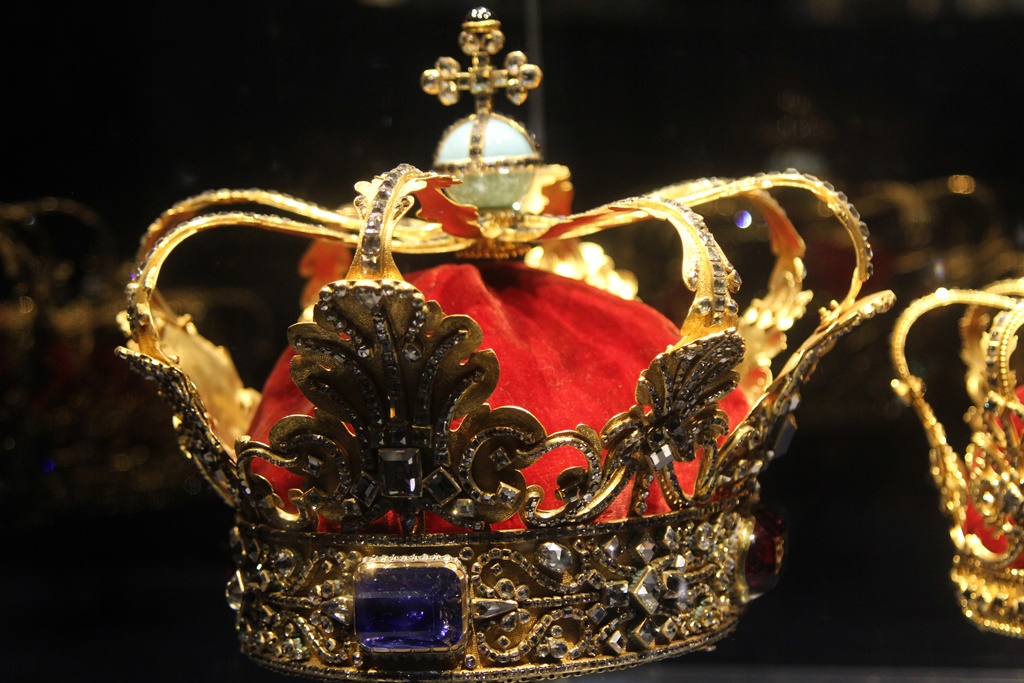
Christian V's Crown (1670-71)
Emerging from beneath the ground, we blinked and puzzled over what to do with the rest of our
last day in Copenhagen. A mental note we had made to ourselves earlier reemerged, and after
brief consideration we headed for a bus stop. We were going to Christianshavn and the Our
Savior Church.



